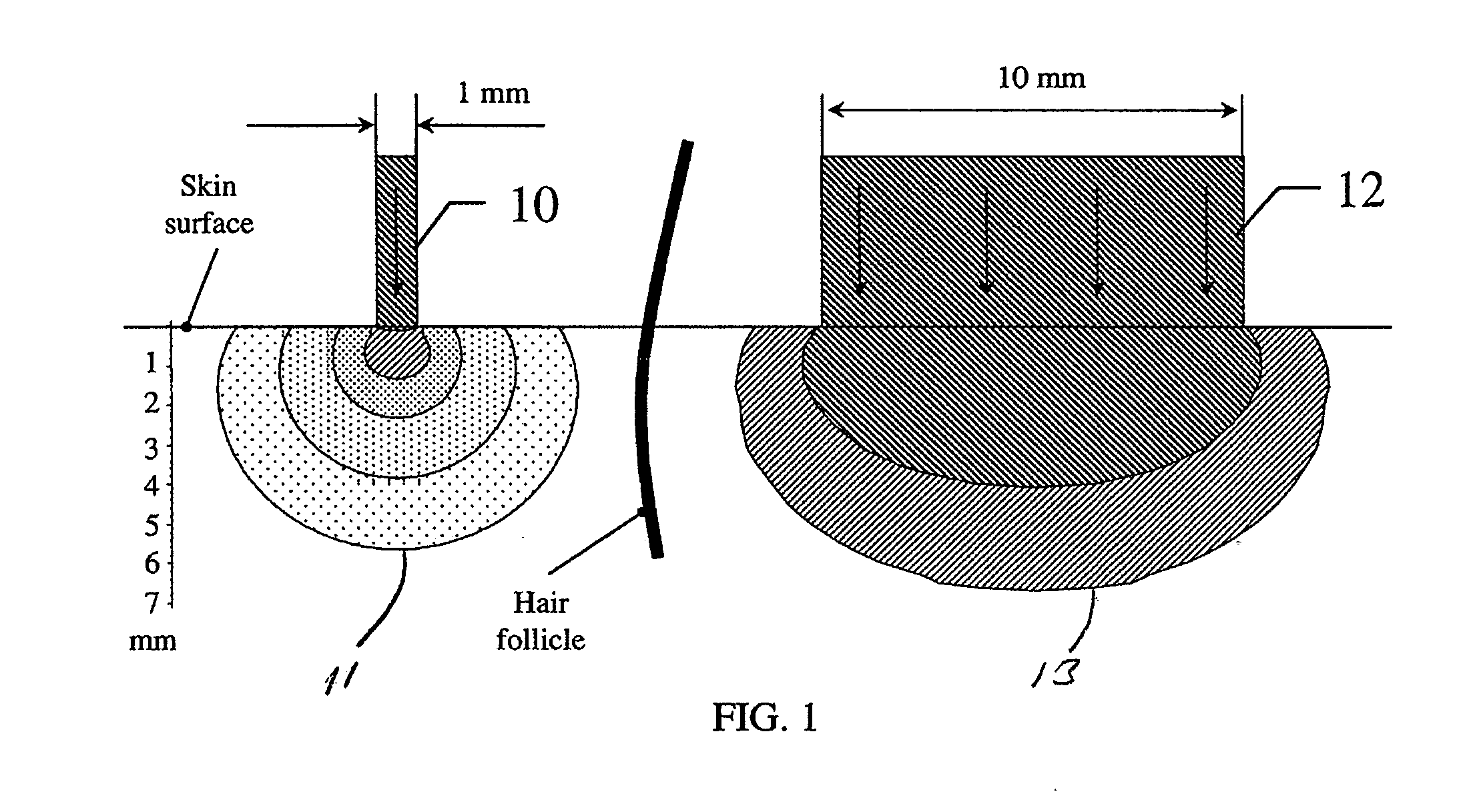Method and apparatus of treating tissue
a tissue and apparatus technology, applied in the field of tissue treatment, can solve the problems of large diameter spots, high power (both electrical and light output) required to deliver permanent or long-lasting results, and high cost of treatments,
- Summary
- Abstract
- Description
- Claims
- Application Information
AI Technical Summary
Benefits of technology
Problems solved by technology
Method used
Image
Examples
Embodiment Construction
[0039] The theory of light diffusion in scattering media is used to determine the amount of fluence needed to have a cosmetic effect on the skin. In the near IR spectral region the absorption coefficient for skin is μa=0.02 mm−1. This coefficient gives the number of events of absorption for an average photon traveling along a 1-mm path. The reduced scattering coefficient for skin is μ′s=1.6 mm−1. This coefficient determines the number of events of photon isotropic scattering on the same path. Thus the possibility of a photon scattering is ˜2 orders of magnitude higher than for its absorption. That is why the light propagation in skin is described by diffusion equation rather than by regular wave theory.
[0040] Referring to FIG. 1, two laser beams of equivalent power density or irradiance are seen in cross section penetrating a skin region with a hair follicle shown for scale. The first beam 10 is narrow and as a result its power will diffuse into the skin near to the surface forming...
PUM
 Login to View More
Login to View More Abstract
Description
Claims
Application Information
 Login to View More
Login to View More - R&D
- Intellectual Property
- Life Sciences
- Materials
- Tech Scout
- Unparalleled Data Quality
- Higher Quality Content
- 60% Fewer Hallucinations
Browse by: Latest US Patents, China's latest patents, Technical Efficacy Thesaurus, Application Domain, Technology Topic, Popular Technical Reports.
© 2025 PatSnap. All rights reserved.Legal|Privacy policy|Modern Slavery Act Transparency Statement|Sitemap|About US| Contact US: help@patsnap.com



